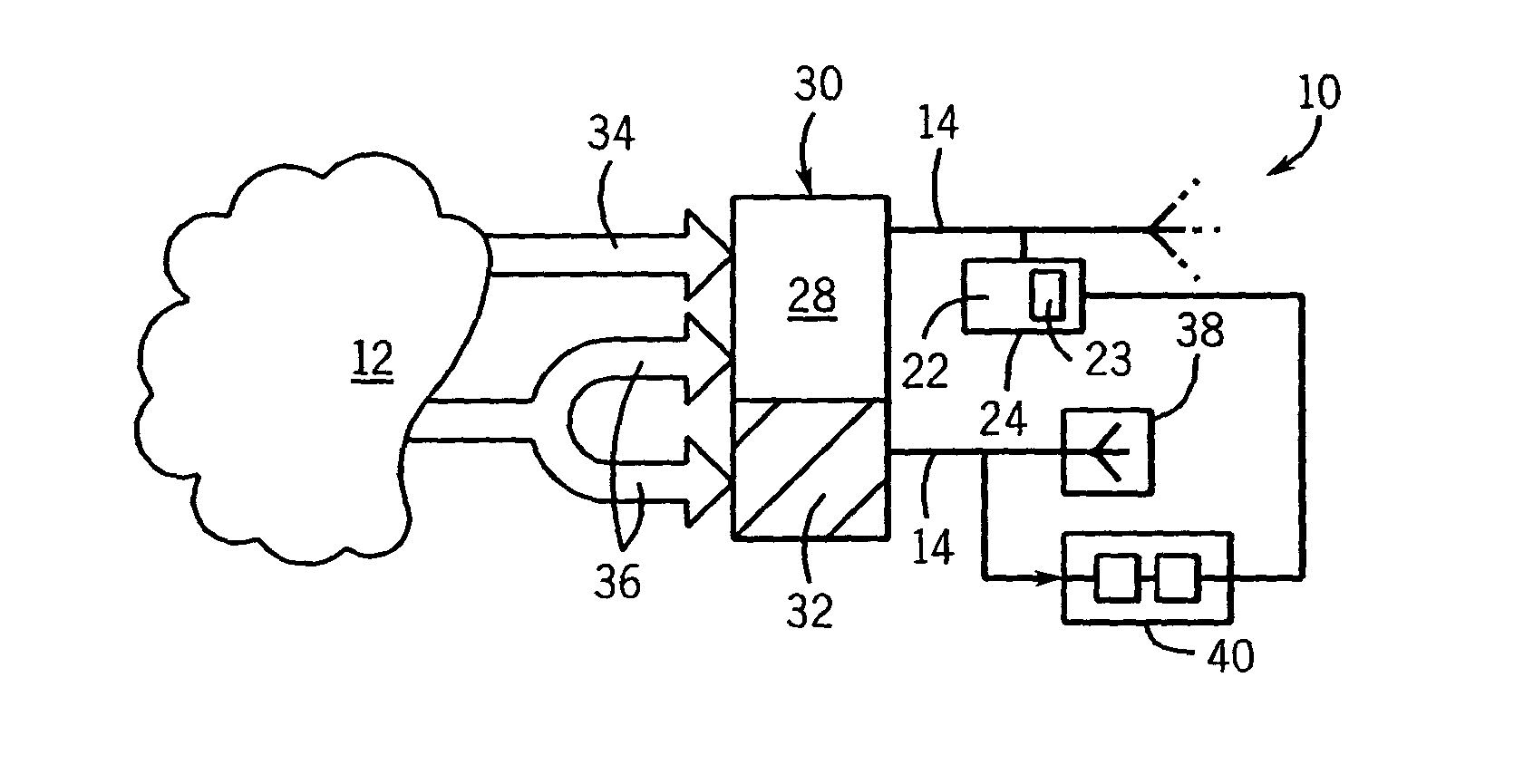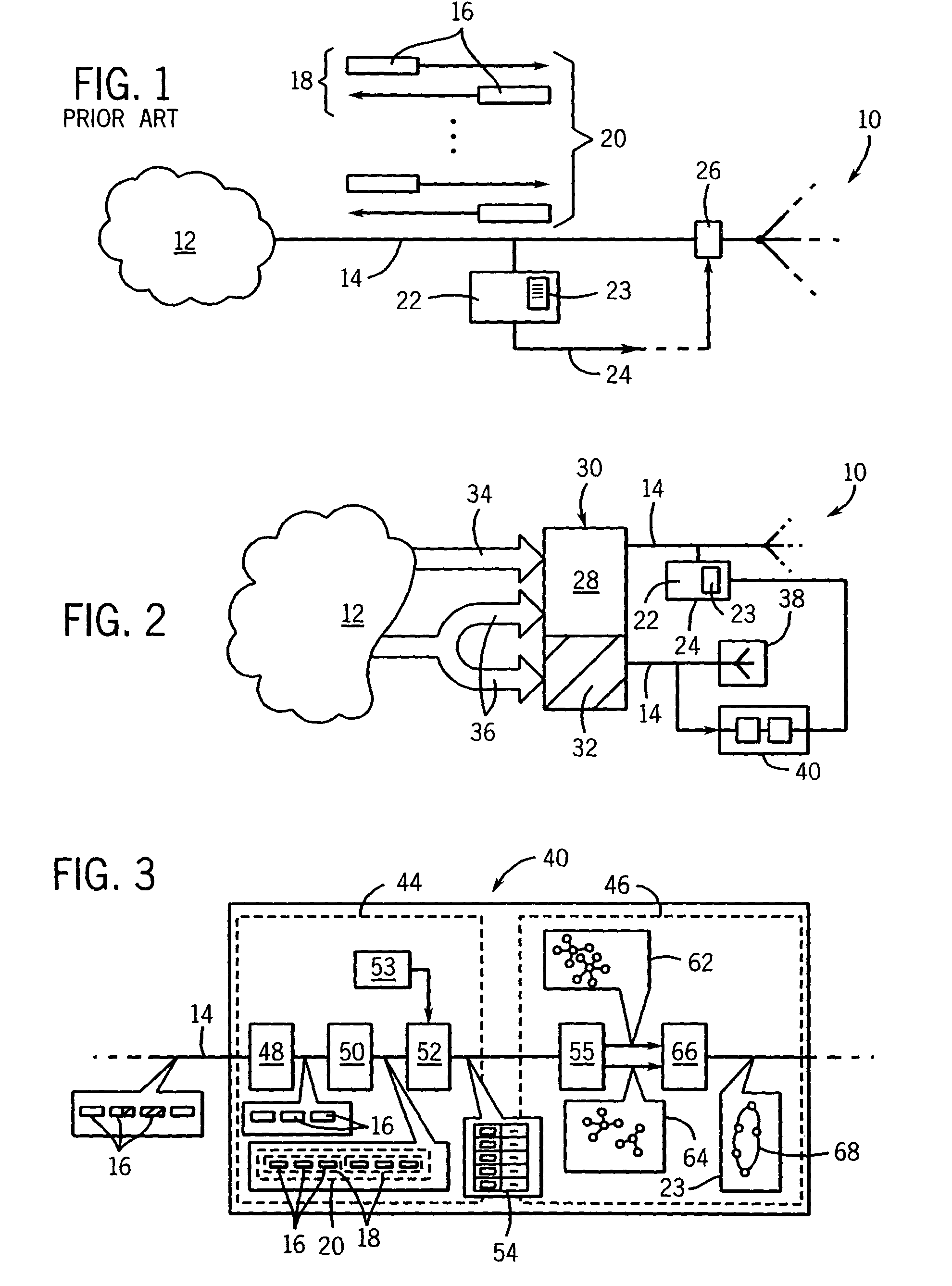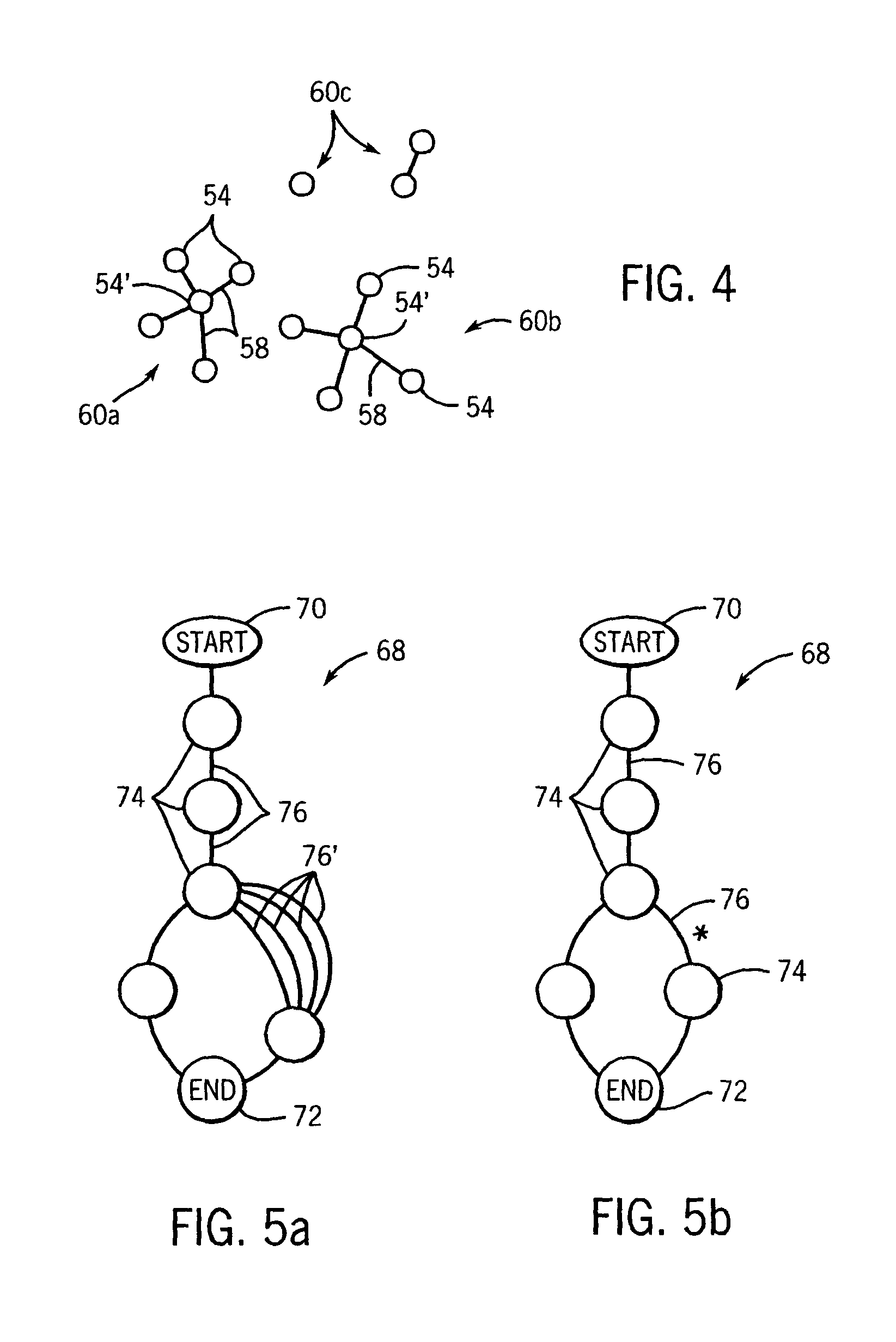Semantically-aware network intrusion signature generator
a network intrusion and signature technology, applied in the field of computer network security, can solve the problems of increasing the vulnerability of computer networks, worms disrupting the network, damage to programs and data on the computer, etc., and achieve the effect of sophisticated detection of malicious network traffi
- Summary
- Abstract
- Description
- Claims
- Application Information
AI Technical Summary
Benefits of technology
Problems solved by technology
Method used
Image
Examples
Embodiment Construction
[0038]Referring now to FIG. 2, the network 12 may communicate with the network 10 at one or more addresses in an address space 30, for example, the address space of the Internet. The address space 30 includes “brightspace” addresses 28 currently used by standard network computers and “darkspace” addresses 32 currently unused by standard network computers. The brightspace addresses 28 will receive both legitimate traffic 34 and malicious traffic 36 while the darkspace addresses 32 will receive predominantly malicious traffic 36.
[0039]A real or virtual, honeypot or honeynet 38 may be connected to one or more darkspace addresses 32. For simplicity, only the honeynet 38 will be described. The honeynet 38 as described above presents a facade to the network 12 having the appearance of a standard interface to a functioning network, and yet as a simulation, the honeynet 38 is not susceptible to conventional attacks. Typically the honeynet 38 will be isolated from a real network 10 and will ...
PUM
 Login to View More
Login to View More Abstract
Description
Claims
Application Information
 Login to View More
Login to View More - R&D
- Intellectual Property
- Life Sciences
- Materials
- Tech Scout
- Unparalleled Data Quality
- Higher Quality Content
- 60% Fewer Hallucinations
Browse by: Latest US Patents, China's latest patents, Technical Efficacy Thesaurus, Application Domain, Technology Topic, Popular Technical Reports.
© 2025 PatSnap. All rights reserved.Legal|Privacy policy|Modern Slavery Act Transparency Statement|Sitemap|About US| Contact US: help@patsnap.com



